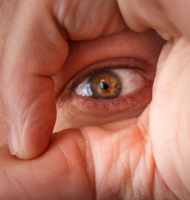Gold said: Steven C. said: Thanks guys - The speaker phone thread was VERY interesting (and I hope my wife doesn't notice when I buy a Yeti!). However, that's just one part of three aspects right? That will let my player hear what's going on, but she needs to see and speak as well... I don't own one, but I think the point of the speakerphone recommendation is that it has live audible speakers with feedback cancellation. It has speakers and mics. If a speakerphone (or a set of speakers) is selected as your computer audio output device, you will hear your Jukebox sound there, as well as your remote guest's voice. Typically the problem with having live speakers in the room, and also live mics open, is that there can be a feedback loop. Configure your equipment and/or manage your mic input volumes to avoid feedback (it is possible). The recommended speakerphone should be made for this, but it can also be done with regular gear like computer speakers or home stereo or the TV's output speakers. While the Yeti microphone does have audio out, it's an aux jack, not a speaker. The 'out' on a Yeti is intended to be used for headphones, so you can do something like listen to your audio quality in real time while you record yourself speaking. That feature is not meant for treating it as a conference speakerphone. You can see the underside of my Yeti on the right: USB cable connecting the device to my computer, and a headphone jack which I don't actually use. It's also got a threaded hole for attaching it to a boom if you were working in a studio or something. More importantly for using a Yeti as though it's a speakerphone are the gain and pattern controls. From left to right, the patterns are: Stereo -- Uses left and right channels to create stereo sound Omnidirectional -- Ideal for recording audio sources surrounding the microphone (such as a room full of local players playing the game) Cardioid -- Records audio sources in front of the microphone (the gain and pattern dials are on the back; there's a mute button and a volume dial for the headphones on the "front" side) Bidirectional -- Records audio sources in front and behind the microphone, ideal for recording a conversation between two people sitting across from each other. Note that the microphone is capturing sound from around the sides of the device (which sides depend on the pattern selected), not from the tip like you might find in a handheld microphone. The gain dial will restrict what sounds get picked up. The lower the gain setting, the louder a noise has to be in order for it to get recorded, and vice-versa. The gain and pattern settings shown have been used to play Roll20, with 1-2 players sitting in front of the microphone and the computer's speakers behind it. The speakers are about 1.5ft from the microphone, and the players are 2-3ft away most of the time.






